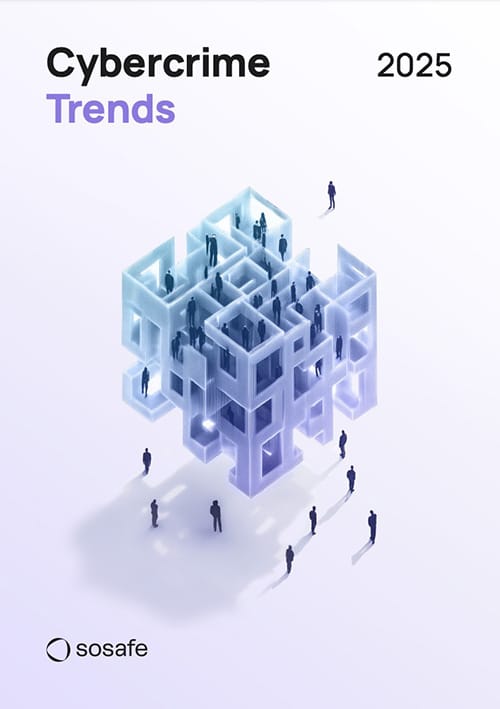
Quid pro quo attacks
What are quid pro quo attacks?
Quid pro quo attacks fall under the umbrella of social engineering frauds, where the attacker offers a service or benefit in return for information or access. Imagine someone posing as a tech-support agent offering to speed up your computer. They seem reliable and say all the right things to make you believe you need their services. In fact, they really help you speed up your computer, and you believe you received your side of the bargain. However, what if, in the process of speeding up your computer, they gain access to your sensitive files and steal your info? This is the deceptive give-and-take at the heart of quid pro quo attacks.
In recent years, the digital realm has witnessed an uptick in social engineering attacks, with quid pro quo being no exception. According to the FBI’s Internet Crime Report 2023, tech support scams – one of the most common types of quid pro quo scams – grew in number for the third year in a row. Even more concerning, it was the third costliest cybercrime in 2023, resulting in over $900 million in losses.
The statistics above shed light on the severe financial repercussions quid pro quo attacks can have, but they also amplify the importance of preventive measures and being well-informed about the various strategies scammers use to trick their victims.

Anatomy of a quid pro quo attack: How does it work?
From the attacker’s first contact to the eventual exploitation, quid pro quo attacks incorporate a deliberate and calculated scheme that deceives the target before exploiting them. It’s a methodical approach, so it’s worth understanding how it unfolds step-by-step to combat it successfully.
- Approach: The attack often begins with a seemingly innocent and helpful approach. The attacker might pose as a helpful IT support technician or someone offering a fantastic deal, making their approach seem legitimate. For example, you may receive a browser popup informing you that your device has viruses and an offer for free antivirus software.
- Building trust: As the victim takes the bait, the attacker moves on to the next stage, gaining trust and building rapport. They may provide the promised help or service or a seemingly legitimate product, further lulling the victim into a false sense of security.
- Exploitation: Finally, when the attacker believes they have established enough credibility, they exploit the situation. Once the victim is comfortable, the attacker may request sensitive information or access to one of their devices, and this is where the trap is sprung. The attacker has achieved their goal, potentially gaining access to confidential data or compromising the victim’s security.

Recognizing quid pro quo attacks
While distinguishing a quid pro quo attack from a genuine offer for products or services can be challenging, some signs help you detect a quid pro quo attempt. If you notice any of the following, approach them with caution and reach out for help if needed:
- Unsolicited offers or requests: One sign of a quid pro quo scam is the unsolicited nature of the offer or request. Remember that employers don’t typically reach out to individuals with job offers out of the blue, and legitimate tech support doesn’t magically appear at your doorstep. Similarly, valid medical solutions don’t manifest without prior inquiry.
- High-pressure tactics: Scammers are masters at creating a sense of urgency to make you act hastily without thorough consideration. You might encounter phrases like “This offer won’t last long,” “Other buyers are waiting to cash in,” “Many candidates have already applied,” or “We only have a limited number of positions available.”
- Requests for personal or financial information: Since quid pro quo scams often appear to involve a fair exchange, requests for personal information can appear discreet and necessary. Watch out for demands that deviate from the ordinary, such as requests for your social security number or bank details. Legitimate transactions rarely require such sensitive information upfront.
- Unclear or unrealistic promises: The age-old adage “if it seems too good to be true, it probably is” applies perfectly to quid pro quo scams. Whether it’s a miracle cure, a get-rich-quick scheme, or a job that promises substantial returns with minimal effort, these unrealistic offers should trigger your skepticism. They are often traps designed to deceive you into providing fraudsters with information or money.
- Suspicious payment requests: Financial matters should be transparent and reasonable. If a potential service provider suddenly requests payment for services, training, or equipment you haven’t requested or they haven’t provided, it should raise a red flag. Be careful with unspecified and unexplained payment requests and ensure that such transactions have been previously authorized.
Quid pro quo vs. baiting attacks
Quid pro quo and baiting attacks are two social engineering tactics that involve manipulation. However, they operate slightly differently.
The most substantial difference lies in the exchange itself. In quid pro quo attacks, a specific element is offered. Attackers often initiate contact by offering something, such as antivirus software, a support service, or a free upgrade, in exchange for sensitive information or access to your device. On the other hand, baiting attacks focus on tempting victims without an explicit agreement. Attackers use irresistible offers or content to lure victims into taking actions that serve their objectives without an upfront exchange being the primary driver. For example, attackers may release malicious software disguised as free software for download, introducing malware into your device.
Quid pro quo attacks often have a more prolonged and methodical approach. Attackers may offer assistance or service, gradually establishing trust before exploiting it. In contrast, baiting attacks rely predominantly on deception but capitalize on the victim’s curiosity or desire for something enticing. They rely on creating a sense of urgency or curiosity in the victim to prompt quick, often impulsive actions.
Once attackers deceive the target, the goal of a quid pro quo attack is to gain access to sensitive data or systems. Baiting attacks focus more on tricking victims into taking specific actions, such as clicking a malicious link or downloading a malware-infected file.
Quid pro quo attacks operate on the psychological principle of reciprocity, where individuals feel obliged to return favors. Victims may provide information willingly, thinking they are reciprocating the help received. Baiting attacks, on the other hand, lean more on coercion, leveraging the victim’s desire for gain or fear of missing out. Victims may act under the impression of receiving something valuable without feeling the same sense of reciprocity.

Main tactics used in quid pro quo attacks
Quid pro quo attacks come in various shapes, from enticing job scams to cunning charity deceptions and shifty investment gambits. The common thread? They all want you to give up something valuable for something that appears to be a digital pot of gold. Let’s explore some of the most prevalent forms these attacks can take:
- Technical support: The perpetrator poses as a legitimate tech support agent, usually from a well-known company. They dangle the promise of resolving a fictitious issue on your device, such as a phantom computer virus. In exchange for their “help,” they request remote access to your system. This seemingly innocent exchange often culminates in the attacker gaining access to sensitive data or planting malicious software on your device.
- Software upgrade: Here, attackers impersonate reputable software vendors and present victims with a tempting offer – a free or heavily discounted software upgrade. However, there’s a catch. To access this seemingly beneficial upgrade, victims are required to provide personal information or login credentials.
- Educational or career advancement offers: In this sinister variant, attackers offer educational or career advancement opportunities. They may claim to secure admission to a prestigious institution or a high-paying job in exchange for the victim’s personal information.
- Free Wi-Fi or access points: Crafty attackers set up rogue Wi-Fi networks or access points, often with legitimate-sounding names, offering free internet access. However, when users connect to these rogue networks, attackers can intercept and monitor their internet traffic, capturing valuable login credentials and other sensitive data.
- Promotions: Attackers use the attraction power of free products, such as gadgets or gift cards, to entice victims into providing personal information or taking actions that compromise their security. These “freebies” are often fictitious, and the illusion of financial gain tempts victims to relinquish their data without receiving anything in return.
- Survey scams: Attackers use surveys as their bait, promising enticing rewards for completing them. Victims are drawn in by potential gifts or prizes, only to find that these surveys are designed to extract personal or sensitive information that is later used for malicious purposes.
- Soliciting business feedback: Unsolicited requests for business feedback may come your way through email, SMS, or phone calls, so be cautious. Legitimate organisations typically follow a formal process for collecting feedback. Attackers may use this guise to extract valuable data.
- Posing as a researcher: Some attackers assume the role of a researcher and seek sensitive information from unsuspecting victims. Always verify their credentials and the purpose of their research to avoid falling into their trap.
It may seem like quid pro quo attacks are easy to spot, but overconfidence is also a card that attackers often bet on. Thinking we are too smart to be fooled can actually make us more vulnerable.
The human element: Why we fall for quid pro quo scams
The success of quid pro quo attacks is mainly due to psychological manipulation techniques that are used by attackers. By offering to do a favor or help, attackers create a sense of indebtedness in the target, making them more likely to comply with their requests. This is further reinforced by the principle of reciprocity, which is deeply ingrained in human behaviour.
In these scams, attackers often impersonate trusted authority figures or experts, making it easier for them to gain the trust of their targets. This can be in the form of impersonating, for example, an IT support person or a customer service representative. Individuals are more likely to trust and comply with the requests of someone they perceive as an authority figure.
In addition, attackers may also create a sense of urgency in their targets by using tactics like time-sensitive offers or threats. This can make the target feel stressed and act quickly without thinking things through, making them more vulnerable to falling for the scam.
Real examples of quid pro quo attacks
The deceptive tactics used in quid pro quo attacks to take advantage of human psychology can turn even the strongest organisations and the savviest individuals into victims of these attacks. And the effect of it, as we will see below, can be devastating.
Multi-million-dollar cryptocurrency scam
The crypto world is often a prime target for all kinds of cyberattacks, including quid pro quo attacks. In 2022, the hacking group Lazarus impersonated some job recruiters on LinkedIn. They successfully lured a senior engineer from Sky Mavis, the company behind Axie Infinity, into a series of fake job interviews. These interviews led the engineer to download a fabricated job offer file infected with spyware, which provided the scammers with access to Axie Infinity’s blockchain network and led to the theft of $617 million in cryptocurrency. This security breach stands as one of the largest cryptocurrency heists to date. security breach, stands as one of the largest cryptocurrency heists to date.
Health scams targeting the most vulnerable
We all saw how scammers took advantage of the 2020 pandemic to make money. Unfortunately, they are still using health scams to fill their pockets at the expense of the most vulnerable.
Seniors are frequently the targets of scammers who make false promises and ask for personal medical information. At the beginning of 2024, healthcare fraudsters tried to scam multiple senior adults by offering them free services, equipment, or gift cards in exchange for their personal information and the verification of eligibility for Medicare services. To carry out the scams, they contacted their victims through phone calls, online advertisements, and text messages, falsely claiming that the recipients qualify for “free” or “no-cost” services.
In a similar type of scam, attackers sent genetic tests to their home – which neither they nor their medical practitioner ordered – with the objective of identity theft or fraudulent billing. If the victim fell into the trap and took the genetic test, the healthcare provider could deny covering the costs of an unauthorized test, therefore making the victim pay the full cost, which could be thousands of dollars.
Digital hygiene: Fortifying against quid pro quo attacks
While there is no guarantee against quid pro quo attacks, chances are you are more likely to detect and not act upon them if you apply a set of security best practices. Here are some things to improve your organisation’s digital hygiene and help employees recognise and deter quid pro quo attacks:
- Employee training: Educate your staff about the dangers of quid pro quo attacks and provide clear guidelines for identifying and responding to potential threats. Regular and continuous training sessions can reinforce their awareness and vigilance.
- Robust authentication: Implement strong authentication measures to verify the identity of individuals requesting sensitive information or access. This can include multi-factor authentication (MFA) and verification procedures.
- Comprehensive security policies: Develop and enforce comprehensive security policies that outline how sensitive data should be handled, shared, and protected. Ensure your employees are aware of and follow these policies.
- Incident response plan: Prepare for the worst by creating an incident response plan that outlines the steps to take in the event of a security breach. Timely action can minimize the damage caused by an attack.
- Regular monitoring and assessment: Continuously monitor and assess your organisation’s digital security posture. Regular security audits can help identify vulnerabilities and areas for improvement.
The give-and-take deception: How to build a resilient mindset in your organisation with SoSafe
A successful quid pro quo attack can have devastating effects on your organisation. And with the threats becoming more sophisticated thanks to emerging technologies like AI and deepfakes, it’s not a question of whether to get protected but rather how to get protected against these threats. A comprehensive human risk management strategy can turn your employees into strong defenders who recognise and report them instead of falling for scams.
At SoSafe, the human element is at the centre of our cyber security efforts. That’s why our e-learning platform offers an immersive, personalized training experience where employees learn exactly what they need to learn, without wasting their valuable time. Besides, lessons are gamified and based on stories to keep them engaged and interested in learning.
However, awareness is not just about learning. It’s about applying knowledge to real life and creating sustainable behaviour change. Our phishing simulations are tailored to your employees’ needs and behaviour to more efficiently target awareness gaps.
A comprehensive approach to human risk management will make your organisation more resilient against the increasingly complex cyber threat landscape we now face.


















